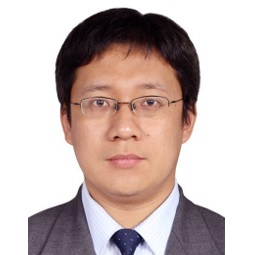Recent Advances in Mineral Processing and Coal Preparation for Sustainable Development
A special issue of Sustainability (ISSN 2071-1050). This special issue belongs to the section "Resources and Sustainable Utilization".
Deadline for manuscript submissions: closed (31 July 2023) | Viewed by 1325
Special Issue Editors
Interests: green coal mining; AI-based rock mechanics; non-continually mining-induced mechanics; cluster mechanics; critical mechanics
Special Issues, Collections and Topics in MDPI journals
Interests: rock and soil mechanics; geotechnical engineering
Interests: water resource protection; utilization in coal mining
Special Issues, Collections and Topics in MDPI journals
Interests: rock mechanics; rock engineering
Interests: mining engineering; petroleum engineering; civil engineering; computational mechanics
Special Issues, Collections and Topics in MDPI journals
Special Issue Information
Dear Colleagues,
In 2022, we will publish a Special Issue on the topic of "Recent Advances in Mineral Processing and Coal Preparation for Sustainable Development" in Sustainability (SCI index). The purpose of the Special Issue is to provide an up-to-date discussion and new outlook on the broad field of green coal mining, low carbon utilization, sustainable development of coal industry, water resource protection, and utilization in coal mining and engineering applications. The topic of this Special Issue not only includes the latest progress of mineral processing and coal preparation for sustainable development but also provides new mechanic theory in rock engineering, including AI-based rock mechanics, non-continually mining-induced mechanics, cluster mechanics, and critical mechanics used in safe mining coal and coal carbon-correlated new materials.
Recent advancements in theory, lab or in-situ test, numerical modeling, and perspective view of sustainable development in coal mining are also encouraged for discussion. The key technologies improving the efficiency or enhancing the sustainability of coal usage, considering low-carbon emission or carbon collection are also welcome to supplement the existing literature or patents. In the future, the green and low-carbon-based usage of coal and its safe mining at deep depths still present huge challenges. In particular, in 2022, the continually rising price and consummation of coal resources has attracted the attention of this issue to an increasing number of people in Europe and Asia, furthermore, extending to rest of the world. The launch of this Special Issue of "Recent Advances in Mineral Processing and Coal Preparation for Sustainable Development" could encourage everyday people to learn more about the coal industry.
All topics in the coal science of mechanics and sustainability of coal usage are relevant, and these include but are not limited to:
- Coal prices continuing to rise.
- New theory or technology in green coal mining;
- Low carbon utilization to improve the sustainable development of coal industry;
- Advancements of experimental test or engineering concept in water resource protection and utilization;
- New mechanical theory of solving discontinuous distribution of stress;
- Abutment pressure-based view of coal bump or static-to-dynamic behavior;
- Applications or development of in-situ stress measurement;
- Influence of THM coupling on the redistribution of abutment pressure;
- New findings of some dynamic behavior by modeling abutment pressure distribution;
- Development of reinforcement for large deformation by building new mechanical model;
- Numerical solution of stress redistribution using PD model, phase-field model, or others;
- Big data-based or AI-based investigation of abutment pressure re-distribution.
Dr. Dongjie Xue
Prof. Dr. Xiaofeng Yang
Dr. Zhiguo Cao
Dr. Fuqiang Gao
Dr. Yongliang Wang
Guest Editors
Manuscript Submission Information
Manuscripts should be submitted online at www.mdpi.com by registering and logging in to this website. Once you are registered, click here to go to the submission form. Manuscripts can be submitted until the deadline. All submissions that pass pre-check are peer-reviewed. Accepted papers will be published continuously in the journal (as soon as accepted) and will be listed together on the special issue website. Research articles, review articles as well as short communications are invited. For planned papers, a title and short abstract (about 100 words) can be sent to the Editorial Office for announcement on this website.
Submitted manuscripts should not have been published previously, nor be under consideration for publication elsewhere (except conference proceedings papers). All manuscripts are thoroughly refereed through a single-blind peer-review process. A guide for authors and other relevant information for submission of manuscripts is available on the Instructions for Authors page. Sustainability is an international peer-reviewed open access semimonthly journal published by MDPI.
Please visit the Instructions for Authors page before submitting a manuscript. The Article Processing Charge (APC) for publication in this open access journal is 2400 CHF (Swiss Francs). Submitted papers should be well formatted and use good English. Authors may use MDPI's English editing service prior to publication or during author revisions.
Keywords
- green coal mining
- low carbon utilization
- sustainable development of coal industry
- water resource protection and utilization









